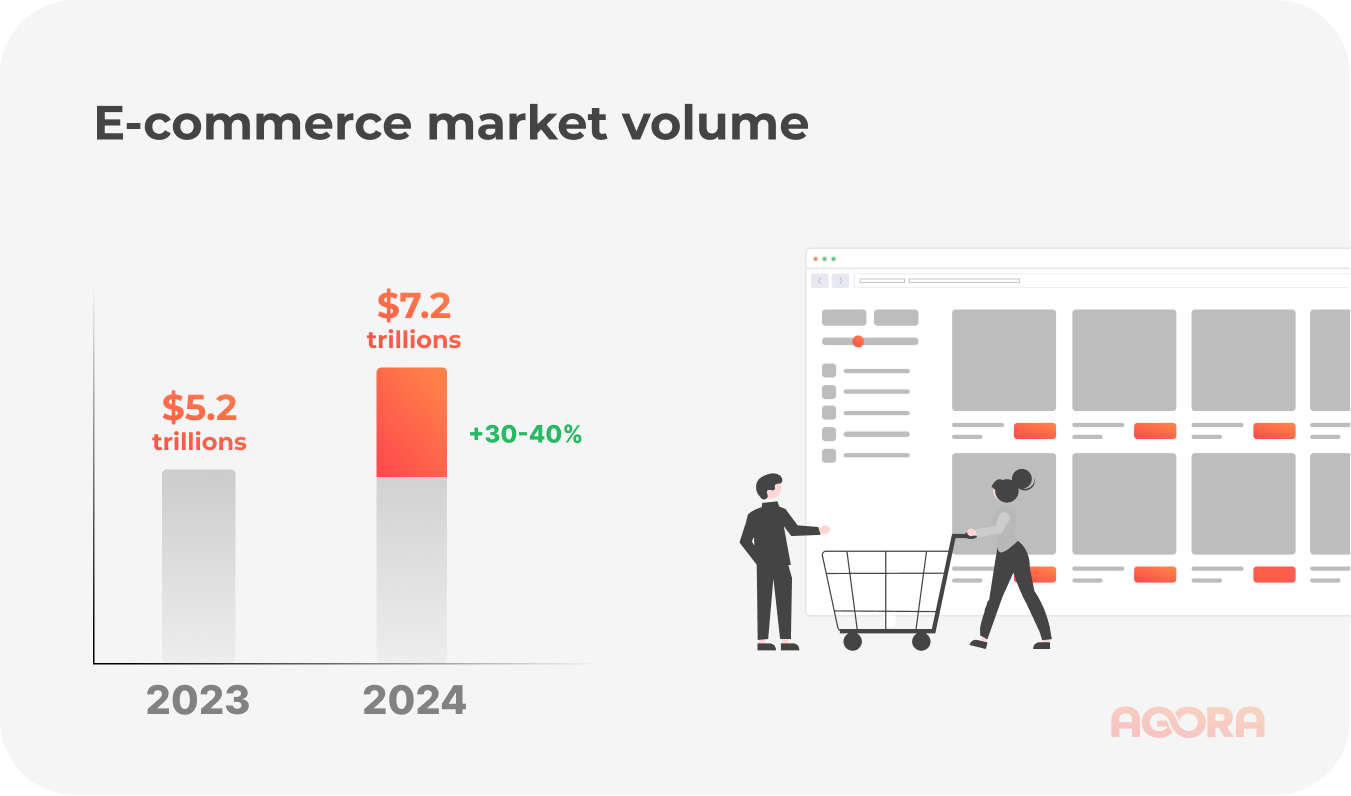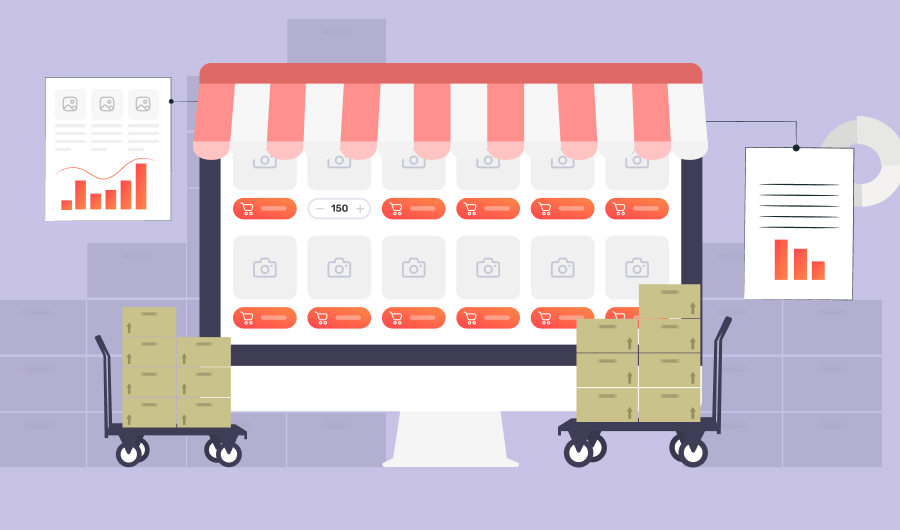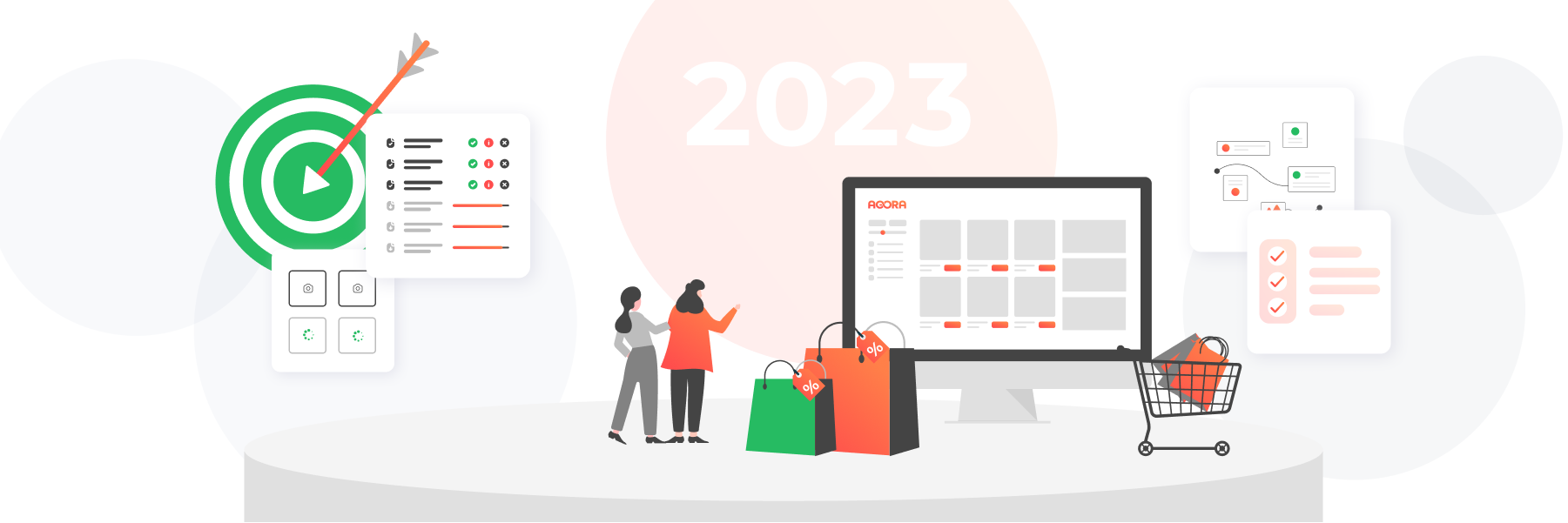
E-commerce trends in 2023
The business hoped for a simpler period to come after the pandemic, but it didn’t happen. The situation brings new challenges both geopolitically and in supply chains, disruption in logistics, inflation, etc. Being aware of electronic commerce development trends of 2023 will help you ensure business benefits in turbulent times, when it is especially necessary to promptly respond to changes.
Due to the analysis of existing trends, companies can formulate a business strategy for the forthcoming period, better understand customer needs, characteristics of behavior, as well as understand how the market will develop in the future and what new ideas and aspects of e-commerce will result in the creation of innovative products and services.
Article content:
➩ What will e-commerce be like in 2023: the figures speak for themselves
➩ Drivers of e-commerce development
➩ Main e-commerce trends in 2023
What will e-commerce be like in 2023: the figures speak for themselves
In the first quarter of 2022 the trend of buying online was noted to lose momentum due to obvious reasons. However, according to the preliminary predictions of experts, there is no significant decline. The customer and purchases shift from offline to online is powerful enough for the ecommerce market to maintain positive development dynamics regardless of the situation.
During the pandemic, new factors emerged and will keep influencing the market for several years, until 2024. An abrupt surge in commerce based online and changes in consumer habits resulting from COVID-19 definitely represented the biggest impact on electronic commerce. According to Statista, the influx of digital buyers worldwide amounted to about 1 billion from 2019 to 2022.
According to experts, the e-commerce market volume will continue to increase and will amount to $5.2 trillion by 2023, and to $7.2 trillion by 2024 regardless of the ‘market turbulence’. Aware of the development prospects, entrepreneurs aim to quickly enter the online market, develop their own online platforms and solutions as soon as possible. This stimulates increase in electronic commerce competition in the realities of 2023. For instance, consumer demand will be shaped differently, if compared to 2020-2021.
Drivers of e-commerce development
What new factors influence the development of the market, e-commerce products and companies’ finances?
- Instability of stock and prices and disruptions of supply chains affect every business nowadays. But the things due to which offline retail, which already experiences a decrease in traffic, suffers the most are the closure of some stores and the increase in the costs of maintaining the full stock after the pandemic.
- Search for effective growth points that require time and money investments. For example, if you bring Asian brands to the market or create new brands in order to replace the ones that have left the market. In such cases, marketplaces are a way to reach end customers.
- Parallel imports, cross-border trade represent new business opportunities in rapidly changing circumstances.
Experts in electronic commerce are certain that companies need to increase their economic efficiency by introducing new products, reducing costs and entering new markets, sales channels and points of sale, which will require new technologies and developments.
Main e-commerce trends in 2023
E-commerce market trends:
- Degradation of offline shopping.
- Development and implementation of companies’ own marketplaces, creation of industry-specific marketplaces.
- Conducting procurement through the marketplace model.
- On-Premise and modern e-commerce technologies.
- E-commerce platforms are a full-fledged marketing tool.
- Personalization and artificial intelligence introduced on the online platforms for sales and purchases.
1. Is it the end of offline sales or is there still a chance?
Online shopping is currently overtaking traditional retail shopping all over the world. However, offline stores won’t disappear, since buyers still need them for emotions, tactile sensing and impressions.
It would be also fair to say that offline retail sales are also developing, aiming to provide caring service and self-service, personalized offers, loyalty cards and expand the stock. It is however more convenient to compare and choose products online. Apart from this, offline sales can’t provide such a huge selection of goods as marketplaces. Therefore, it seems more reasonable for offline businesses to follow the omnichannel trend, see new opportunities and enter online sales in order to be competitive and remain in the market.
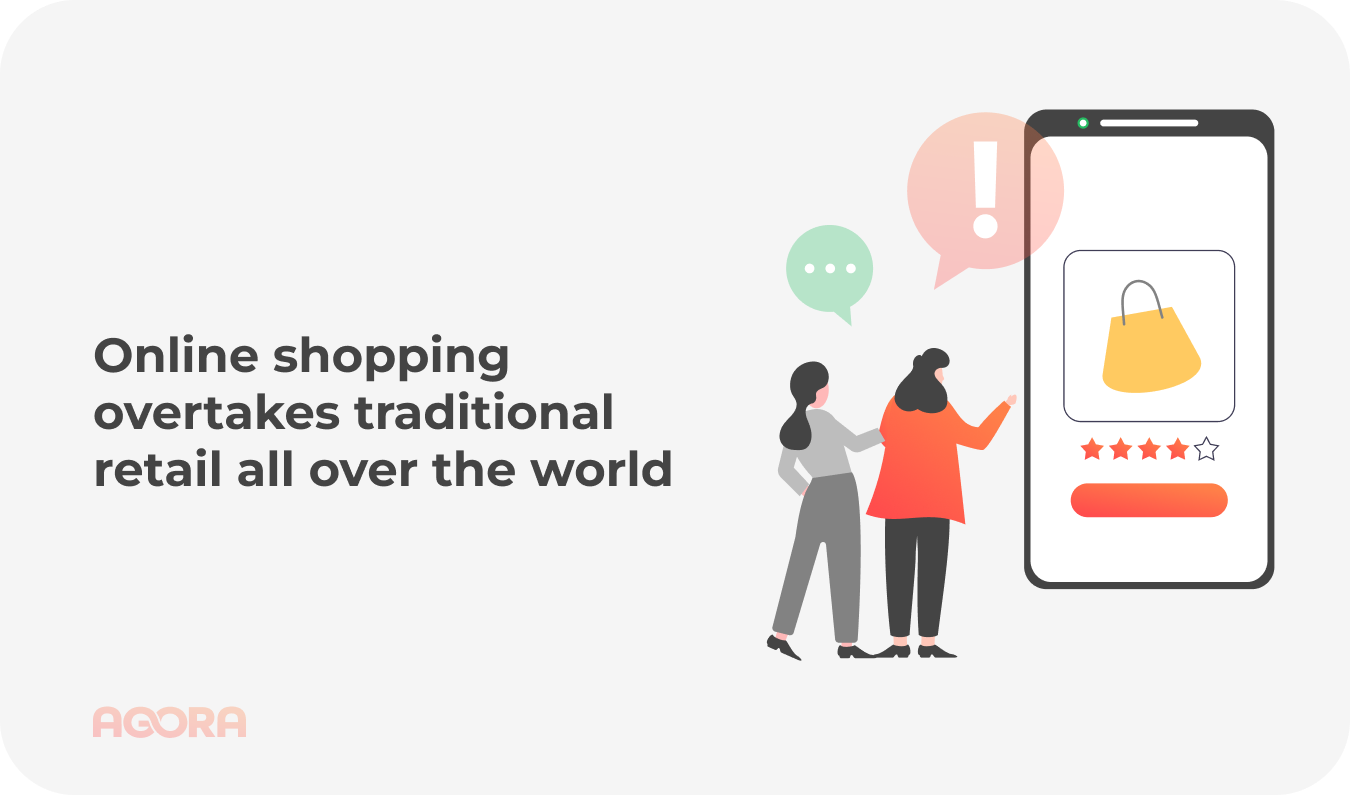
2. Development and implementation of companies’ own marketplaces and creation of industry-specific marketplaces
Global online sales are expected to reach 22% of all retail sales in 2023 (according to Statista, the figure was 14.1% for 2019). Analysts predict that universal marketplaces will take 54% of the market by 2024, while the growth rate of their market share will be slowing down. It may be due to increased competition among sellers on marketplaces, as well as to increased commissions, costs, delivery time and return conditions. Besides, universal marketplaces tend to focus on promoting products and categories instead of brands. The development and implementation of your own marketplace is therefore the most important trend influencing the overall e-commerce market development and companies’ profitability.
Having your own marketplace has undeniable advantages, as they:
- attract buyers with prices without extra margins;
- increase the confidence of buyers and suppliers;
- have great functionality that optimizes work processes: product matching, internal accurate analytics for forecasting production and supply chains;
- have additional earning opportunities: you can earn with commissions from sales of third-party suppliers who display their stock on your marketplace by offering services such as promotion to the top, advertisements, loans on the platform, etc.
It is very likely that the marketplace will become the leading player in every business segment in the following years.
Niche B2B marketplaces are also gaining momentum. According to Gartner, 15% of medium and large e-commerce companies will implement their own marketplaces by 2023, and more than 70% of marketplaces will provide services to B2B clients. Industry-specific marketplaces sell the product better and offer a wide selection of goods in their segment. B2B e-commerce has the advantage of the absence of personal interaction with suppliers, this advantage is marked as the main one by 48% of retailers. Marketplace acts as a guarantor, while companies purchase goods at beneficial prices from the selected suppliers.
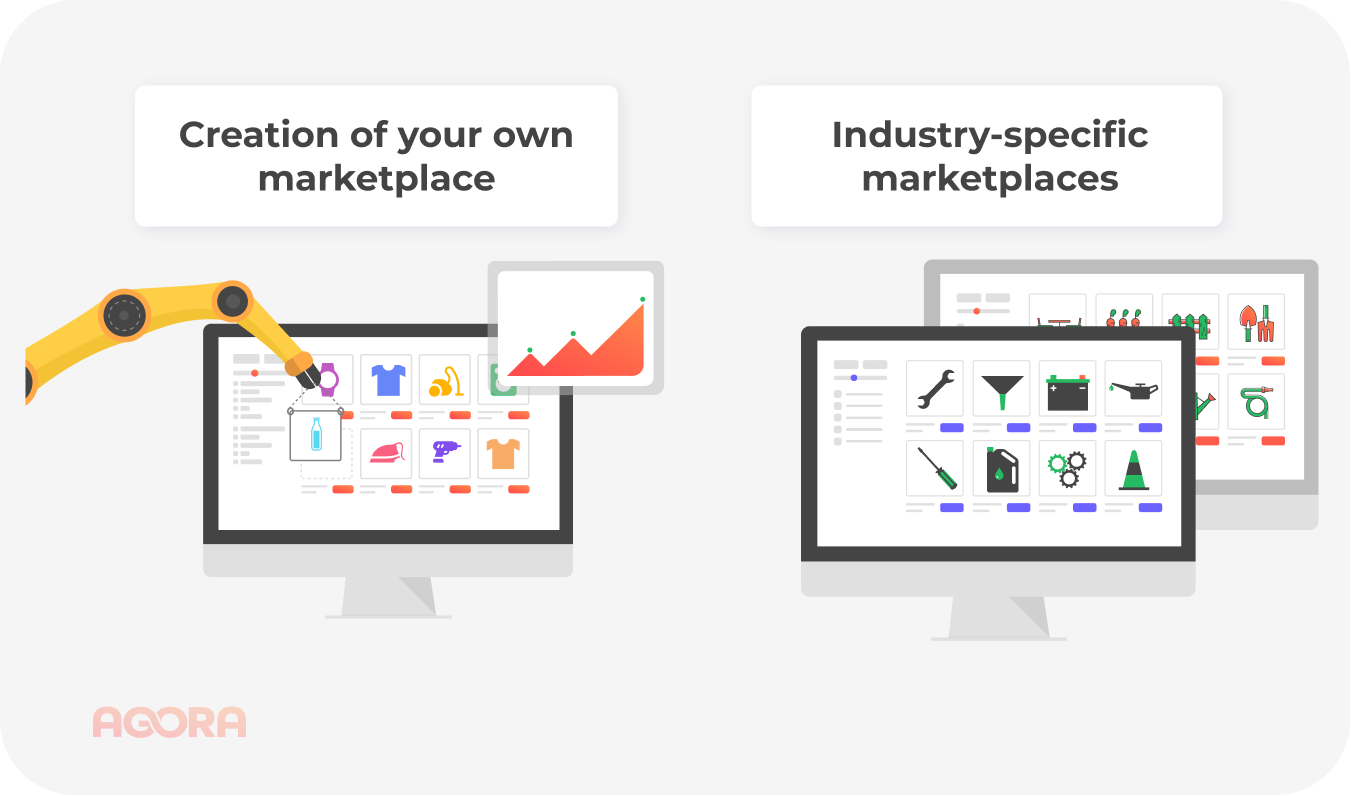
3. Small purchases based on the marketplace model are a promising segment
According to the experts, the volume of small purchases increased by 15.6% in 2022, while the share of small purchases in total procurement doubled. The relevance of this segment is also affected by legislative amendments. However, making small purchases on standard public ETPs is time-consuming and expensive. That is why, the demand for modern online systems for procurement procedures has increased, especially in the B2B segment. EPS, a corporate online store, which is essentially a marketplace for procurement, is designed to solve the problems of small purchases. With EPS, you can select suppliers on an application basis, as well as implement almost all necessary procedures for small volume purchases.
It is also possible to immediately view offers for EPS, considering prices and conditions without placing an application. The system will automatically suggest suppliers by the terms of transaction.
The advantages of EPS:
- it doesn’t have a long verification and accreditation of suppliers process, you can make your own list of trusted suppliers with a scoring system;
- every company chooses the level of automation on the website for itself;
- suitable for large corporations;
- it is easier to create your own EPS and customize processes according to your needs; firstly, you should quickly launch an online store using the MVP model, then you can refine and scale it at any stage of the project.
These are the solutions that our company develops. EPS by AGORAB2B reduces costs, automates routine tasks, increases staff efficiency and enables you to receive beneficial offers from suppliers.
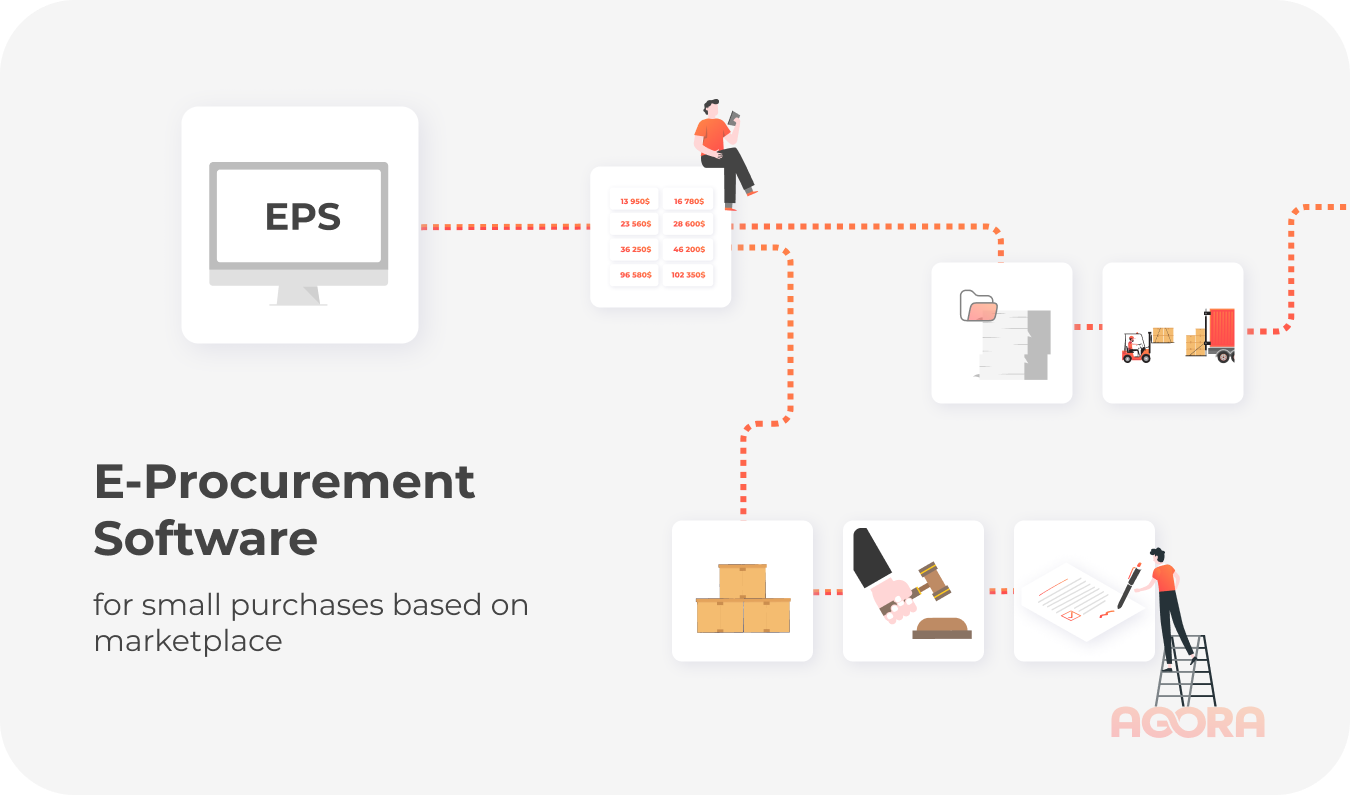
4. On-Premise solutions and modern e-commerce technologies for greater efficiency of companies
It proves to be more secure for companies to have On-Premise solutions, i.e. platforms operating at the company’s own facilities and having access to the source code. With an On-Premise solution, customers are independent from vendors and get more opportunities to develop system functionality and adapt to business needs.
If customers don’t like this option due to unavailable capacities or labor resources, AGORAB2B also provides SaaS solutions, which are the fastest option for import substitution at minimal cost. Besides, AGORAB2B has the option of Low-Code development (solution configuration without programming). Low-code will remain relevant in 2023, as it allows you to quickly create prototypes. Using low-code, companies are not only able to reduce costs, but also demonstrate business results faster.
The development of technologies, for instance regular improvement in the camera quality in every new iPhone version, increases the requirements for consumed content, and content management is not only about a picture, price and description of a product or service, it also covers tens, hundreds and thousands of units of measurement, properties and characteristics. It is the reason why there is now such a great demand for PIM solutions for product content management. PIM reduces the cost of managing all this information, speeds up the processing and delivery of content to various channels, and products instantly go on sale. In the latest update of the AGORAB2B platform, a PIM module is integrated with a HighLoad catalog and is available in the default out-of-the-box solution. In addition, it is possible to order the development of a separate PIM solution for the needs of your organization.
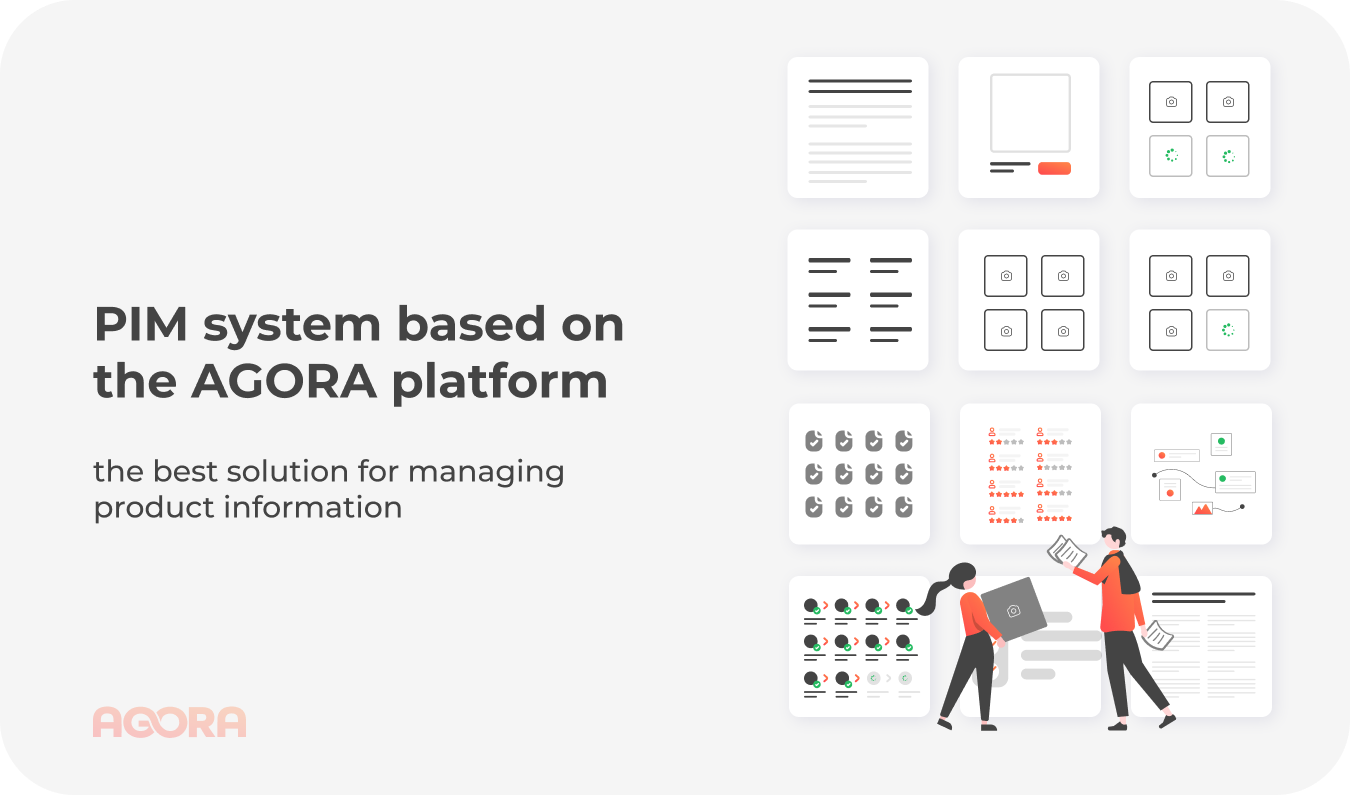
5. E-commerce platforms as a full-fledged marketing tool
Marketplaces are now turning into full-fledged marketing channels. How does it work? When new brands emerge, the companies need to attract attention for them. Marketplaces will be used as the main point of sale for such a task.
- On marketplaces, there is an option of evaluating sales conversion and analytics on user attendance, as well as reports on the current stock available on the platform.
- It becomes more often that buyers look for products directly on marketplaces, not in search engines.
- Not only companies whose products are available on the marketplace can use this marketing channel, but also external advertisers, which is due to the media capabilities of marketplaces.
6. Personalization and artificial intelligence on the sales and procurement platforms
It can be implemented in an online catalog with self-learning smart search based on Elasticsearch. Based on the past customer orders, it suggests similar offers: the more data the platform obtains about the customer, the more accurate these recommendations are. Large platforms display the selection of suppliers, items and analogs for specific requests.
There is also a change towards immersive commerce: augmented (AR), virtual (VR) and extended (XR) reality. Experts predict the spread of AR technologies in online stores and marketplaces in the upcoming years, as well as the emergence of virtual showrooms in e-commerce. The main disadvantage is that such technologies are not available to all companies, so businesses will have to improvise to catch up with market trends.
The personalization of online platforms is no longer a new trend, but it is still relevant. Personalized conditions and functionality retain customers and increase loyalty on the platform.
Their use is relevant for both electronic and mobile commerce. For instance, personalization in m-commerce (mobile commerce) improves the quality of customer service using tools such as push, single window mode, 24/7 availability, smart search, and a personal account connected to any gadget.
The companies that pay attention to new technologies, look for promising growth points and build competitive advantages, will at the end of the crisis. We will soon find out what trends will become mainstream in 2023.
To learn more about the AGORAB2B opportunities and solutions for your business, contact our manager.
Also read
